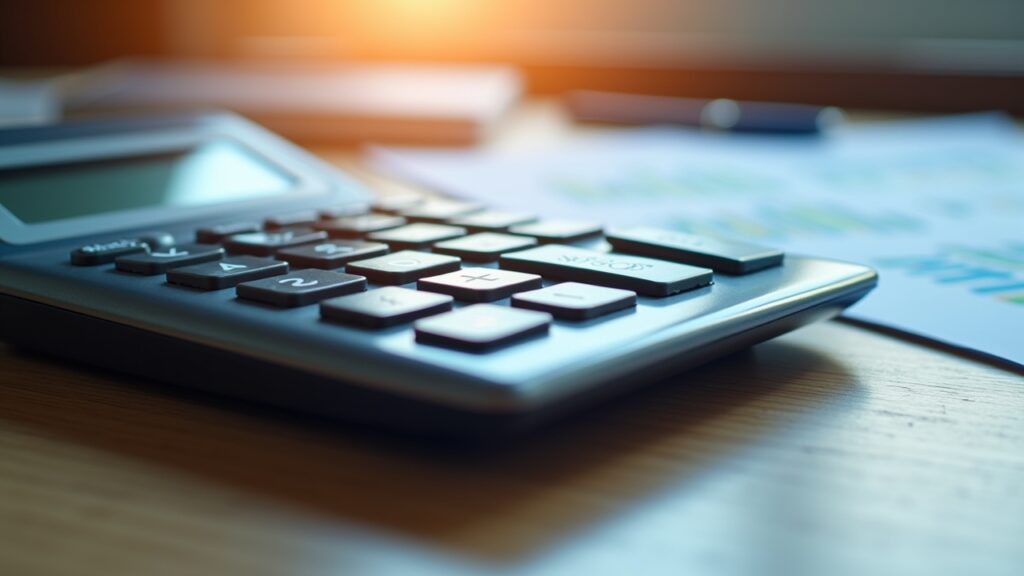Advertisements
Man, I still remember the day my dad showed me how compound interest works. I was maybe 15, sitting at our kitchen table, and he pulled out this old calculator – you know, the chunky kind with the solar panel? He punched in some numbers and my jaw just dropped. “That can’t be right,” I said. But it was.
Here’s the kicker: compound interest is basically money making money on top of money. And honestly, once you understand how to use a compound interest calculator, you’ll never look at savings the same way again!
What Exactly Is a Compound Interest Calculator?

So basically, a compound interest calculator is this nifty tool that shows you how your money grows over time. Unlike simple interest (which only calculates on your original amount), compound interest includes the interest you’ve already earned. It’s like a snowball rolling downhill – gets bigger and bigger.
When I first started investing, I used to do these calculations by hand. Big mistake! Took forever and I usually messed up somewhere. These days, there’s tons of free calculators online that do all the heavy lifting for you.
The Magic Formula Behind It All
Okay, don’t let the math scare you off. The compound interest formula looks like this: A = P(1 + r/n)^(nt). Where A is your final amount, P is your principal (starting money), r is the annual interest rate, n is how often it compounds, and t is time in years.
But here’s the thing – you don’t actually need to memorize this formula. That’s what the calculator is for! Although, understanding what each part means definitely helps when you’re plugging in numbers.
How to Actually Use These Calculators
First off, you gotta find a good calculator. I personally love the ones on Calculator.net because they’re super straightforward. Once you’re there, you’ll need to input a few things:
- Your initial investment (principal)
- Monthly contributions (if any)
- Interest rate (annual percentage yield)
- Time period (usually in years)
- Compounding frequency (daily, monthly, annually, etc.)
The compounding frequency part used to confuse me big time. Basically, the more often your interest compounds, the more money you make. Daily compounding beats monthly, which beats annual. It’s not a huge difference at first, but over decades? We’re talking thousands of dollars.
Real-Life Examples That’ll Blow Your Mind
Let me share something that literally changed how I think about money. Say you invest $5,000 at age 25 with a 7% annual return (pretty average for the stock market). If you don’t add another penny, by 65 you’d have about $74,000. Not bad, right?
But here’s where it gets crazy. If you add just $200 monthly to that same investment, you’d end up with over $525,000! I remember when I first ran these numbers, I actually thought the calculator was broken.
Common Mistakes People Make
Over the years, I’ve seen people mess up their calculations in some pretty predictable ways. First, they forget about inflation – your 7% return might really be more like 4% after inflation eats into it. Second, they assume unrealistic returns. Sure, crypto might’ve given you 100% returns last year, but that ain’t sustainable long-term.
Another biggie? Not accounting for taxes. If your investments aren’t in a tax-advantaged account like an IRA or 401(k), Uncle Sam’s gonna want his cut. This can seriously impact your final numbers.
Different Types of Compound Interest Scenarios
Not all compound interest situations are created equal. Your savings account compounds differently than your credit card debt (unfortunately, debt compounds too – in the wrong direction!). Investment accounts, CDs, bonds – they all have their own quirks.
I learned this the hard way when I was comparing a high-yield savings account to a CD. The savings account compounded daily while the CD only compounded annually. Even though the CD had a slightly higher rate, the savings account actually performed better because of that daily compounding.
Stay Ahead With Compound Interest

Look, I get it – playing with calculators is fun, but at some point you gotta actually start investing. The best time to start was yesterday; the second best time is today. Even if you can only afford $50 a month, that’s better than nothing.
Start by opening a high-yield savings account or a basic investment account. Use those compound interest calculators to set realistic goals. And remember, time is your biggest asset here – the earlier you start, the more that compounding magic works in your favor.
Want to dive deeper into smart money moves? Check out other guides on Plan Wealth where we break down everything from budgeting basics to advanced investing strategies. Because honestly, understanding compound interest is just the beginning of your financial journey!




[…] to learn more about building your investment portfolio? Check out other helpful guides at Smart Start – we’ve got your back on this financial […]